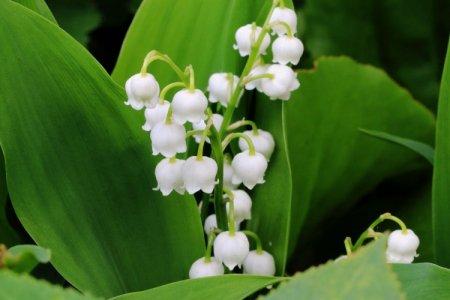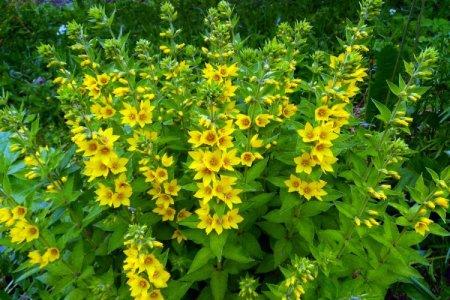
Ledum is called dope and is confused with incense because of its pungent specific smell. Most often it is grown for medicinal needs, and also for landscaping wet swampy areas. Today we want to tell you more about this unusual plant with dozens of names!
general information
Oregano, hemlock, goddess - all these and many other similar names actually refer to the same heather shrub. Ledum is distributed almost throughout the Northern Hemisphere.
Ledum is a honey plant, it has the broadest application in folk medicine, and the beneficial substances in its composition are recognized even by official medicine. But remember that all parts of it are poisonous, and the pungent aroma can cause weakness and dizziness.
The height of the shrub ranges from 50 to 120 cm, depending on the species. Ledum has a superficial, but powerful and branched rhizome with the same powerful and branched stems. They are strong, but thin, straight and creeping.
Over time, wild rosemary shoots become lignified, but young stems are covered only with reddish pubescence. Dense, dark and elongated leaves just exude the very smell of dope. In the spring, last year's wild rosemary shoots are covered with white or pink umbellate inflorescences.

Types of wild rosemary
The genus of wild rosemary is not so diverse and rich. There are only a few of its main varieties, and even fewer in Russia. Let's talk about them!
Large-leaved wild rosemary
An oriental guest prefers rocky and mountainous terrain. It grows in Japan, Korea and, of course, the Far East. This is a compact variety that grows to an average of 50-60 cm, although taller specimens are sometimes found. The leaves of this wild rosemary are really large for its genus - up to 4 cm.

Marsh wild rosemary
This is a resident of regions with a temperate climate. It is branched, rather spreading and tall - up to 120 cm in height. The bush is actively growing, and blooms in late spring. The aroma of marsh rosemary is slightly less harsh.

Transbaikal wild rosemary
A distant relative of the rhododendron is distinguished by a brighter and more decorative flowering. Its pink flowers can even be seen in bouquets. The bush itself is very tall and branched, and in some cases it reaches 2 m.

Greenland wild rosemary
The most frost-resistant species, which is not afraid of any cold weather at all. He has very tough, medium-sized shoots up to 90 cm, which, as they grow, lie to the ground. Stems are densely and densely covered with needle-like, fleecy leaves. Umbrella inflorescences of small creamy flowers reach 6 cm in diameter.

Ledum care
Considering the conditions in which wild rosemary lives in nature, it does not need any special care. Moreover, the plant has excellent immunity and even repels pests on its own.
Temperature and lighting
Ledum is not afraid of frost and winters well in the open field. Occasionally, in a snowless winter, young shoots may suffer, but they can simply be thinned out in the spring. The plant is indifferent to the sun, partial shade or even strong shading.

Watering
Ledum prefers wet areas and reservoirs, therefore, in any other place, regular and intensive watering is imperative. It can only be reduced with prolonged precipitation.

The soil
The soil should be loose and acidic enough. You can add sphangnum or just needles. Periodically loosen the soil and remove the weeds, but remember that the rosemary root system is very close to the surface.

Fertilizers and feeding
Several times a season, wild rosemary can be fed with mineral fertilizers. But this is not necessary and rather relevant for the flowering Transbaikalian species.

Planting and breeding
In nature, wild rosemary propagates by seeds from small bolls, which themselves crack as they ripen. An adult plant can be propagated by layering. To do this, you need to dig a flexible branch into the soil, leaving the top free, and just wait for rooting.
Large bushes can be cut into pieces and then immediately transplanted into new places. And summer healthy semi-lignified cuttings root perfectly in loose nutritious soil, but this is long, and it will be possible to transplant them outside only next spring.
The optimum depth of the planting pit is 40-60 cm, and good drainage is imperative. The distance between the bushes should be at least 60-70 cm. After planting, it is recommended to cover with peat on top.

Pests and diseases of wild rosemary
Ledum is resistant to the absolute majority of flower diseases. He is not afraid of swampy flooded soil, so that even a banal fungus affects him extremely rarely. Pests also do not like the aroma of dope, and insecticides are excellent for rare migratory bugs.

Using wild rosemary in the garden
Ledum is not very decorative, but it is sometimes planted in damp swampy areas where other plants do not take root. In addition, he feels good near bodies of water. It can also be planted in the shade between tall trees and in rocky areas. And also - use as a hedge when zoning.

Ledum - photo
Keep an even larger collection of photos to make it easier for you to identify the rosemary and finally decide what you think about it!



























